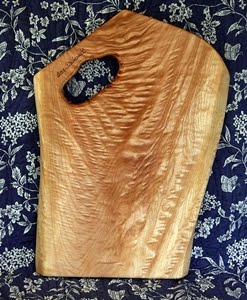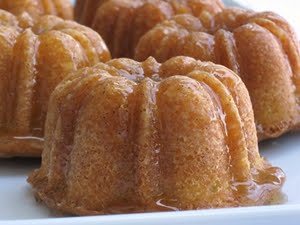It's been awhile since I've made bread. I have a hard time getting in the mood for a bread-baking session when it's 105 F. outside. But the temperatures here have finally become less oppressive, to the tune of 68 F. and I'm motivated to get my hands in flour, yeast, and water.
I've posted about this bread before. I got the recipe from Ann (Thibeault's Table) a few years ago, and it's the simplest bread recipe I use. The food processor does all the work, a nice respite from the hand mixing and kneading necessary for our grandmothers.
It's easy to doctor up this bread dough. Add some cheese and jalapenos, or cheese and roasted garlic, or whatever your imagination dreams up. But today was just pure, unadulterated French bread. It's great sandwich bread, even better toast! To store, wrap the cooled loaf in paper towelling, then into a plastic freezer bag. When ready to re-use, thaw, still fully wrapped, on the counter. To reheat, I heat the oven up to 500 F, then turn it off and place the loaf directly on the baking stone or rack for 5 - 10 minutes. The bread comes out wonderfully.
Many people are intimidated by yeast doughs... don't be! Follow the recipe as written and you'll be enjoying a loaf of your own creation in no time!
Ann's French Baguette
1 package dry active yeast (2 1/2 teaspoons)
3-1/2 cups unbleached flour (bread flour)
2-1/4 tsp salt
1-1/3 cups cold water plus 1/3 or so additional water
Place the flour, yeast and salt in the bowl of the food process. Pulse to mix. Add 1 1/3 cups of water and process until the dough comes together. If the dough doesn't form a ball, add a little of the extra water. Process for about 60 seconds, turn off machine and let dough rest for 5 minutes.
Turn on the machine again and rotate the dough about 30 times under the cover, and then remove it to a lightly floured work surface. it should be fairly smooth and quite firm.
Let the dough rest for 2 minutes and then knead roughly and vigourously. The final dough should not stick to your hands as you knead (although it will stick if you pinch and hold a piece); it should be smooth and elastic and, when you hold it up between your hands and stretch it down, it should hold together smoothly.
Preliminary rise - 40 to 60 minutes at around 75°F. Place the dough into a clean dry bowl, (do not grease the bowl), cover with plastic wrap, and set in a warm place free from drafts. (note the French do not grease the bowl because they believe the dough needs a seat to push up from). This first rise is sufficient when the dough has definitely started to rise and is about 1-1/2 times its original volume.
Deflating: Turn the dough onto your lightly floured work surface roughly and firmly pat and push it out into a 14 inch rectangle. Fold one of the long sides over toward the middle, and the other long side over to cover it, making a 3 layer cushion. Repeat the operation. This important step redistributes the yeast throughout the dough, for a strong second rise. Return the dough smooth side up the bowl; cover with plastic wrap and again set to rise.
Final rise in the bowl - about 1 to 1-1/2 hours or longer. The bread should be 2-1/2 to 3 times its original bulk. It is the amount of rise that is important here, not the timing.
To Shape,
Cut the dough in half. Set one piece aside and cover with a towel.
On a lightly floured work surface pat the dough into a 14 inch rectangle, squaring it up as evenly as you can.
Fold the rectangle of dough in half lengthwise and using the heel of your hand, firmly press the edges together where they meet. Seal well. Pound the dough flat. Now repeat - patting the dough out again and folding it over and sealing the edges. Pinch the edges well and Rotate the dough so that the sealed edge in on the bottom.
Repeat with second piece of dough.
Cover with plastic wrap or loosely with a towel and let rise to more than double again at about 75°f.
Place stone in oven and Preheat oven to 500 F. Slash three long cuts into the loaves and place on the hot stone. Immediately toss a number of ice cubes on to the bottom on the oven to create steam. Bake until bread is golden and has an interior temp of 200°F. Takes about 20 - 30 minutes.
Makes 2 loaves
Monday, October 4, 2010
Subscribe to:
Post Comments (Atom)







































7 comments:
Your loaves are *gorgeous*!! I'm surprised by how much the dough is supposed to rise--I'm always worried about my dough rising too much. Do you know if this is specific to French bread? Or should I be letting my wheat bread rise this much? Thanks! :)
Nothing is better than fresh baked bread. Your loaves are perfect Lori.
Ann
Tiffiny Felix, I'm going to defer to Ann on that question. She's the bread expert! :D Ann?
I'm assuming you are asking if the dough has to rise 2 1/2 to 3 times mention in the second rise.
I'm not an expert by any stretch of the imagination but you don't want to let your Whole Wheat rise more than double. And usually I just let whole wheat rise once before shaping.
Ann
Lori ..gorgeous!!!You and Ann..:)
What beautiful bread. I love to bake bread and didn't make much during our hot, humid summer either. I can't wait to try Ann's recipe.
Beautiful bread Lori! Just perfect!
I have been meaning to try this recipe and now that it has cooled off a little I am putting on my list!
Post a Comment
I appreciate your visit and welcome your comments!